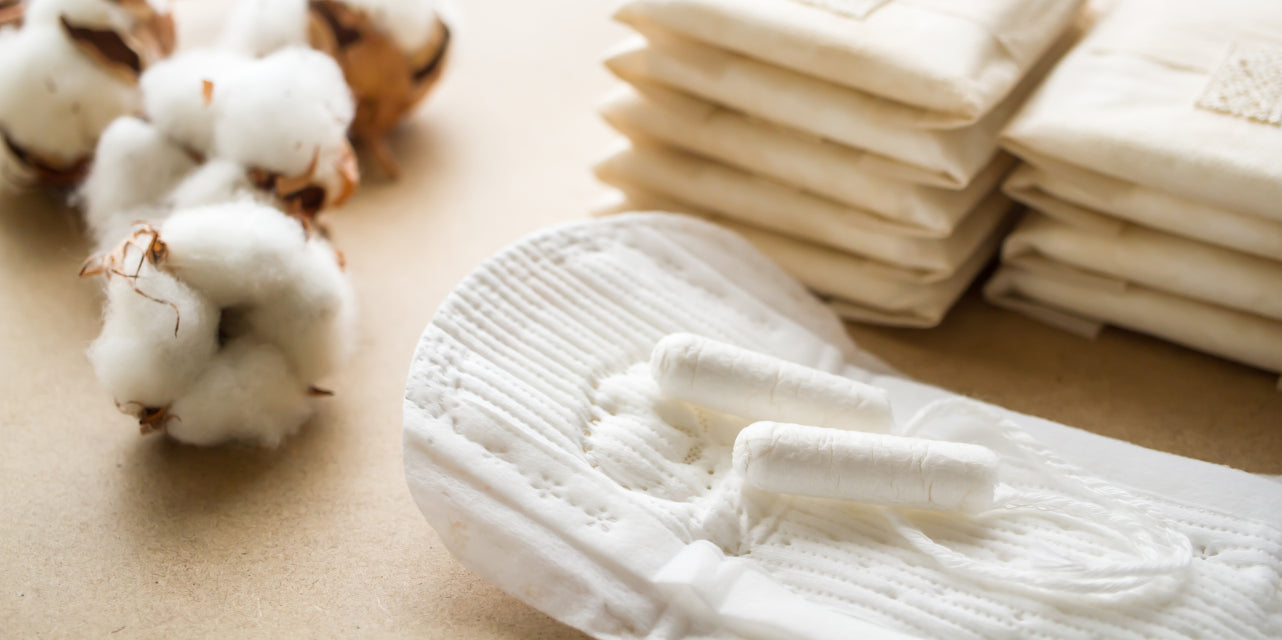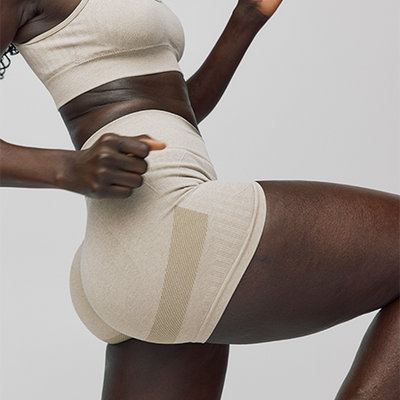
In this article /

Whether it’s a movie set in medieval times or a show taking place in a post-apocalyptic world, you might start to wonder how anyone would handle menstruation. When were tampons invented, anyway? And what did women use before pads? If we place ourselves in different times, how grateful would we be for a DIVA Cup?
Resourcefulness & Papyrus Tampons
If you'd been alive any time before the 1900s and just gotten your period, you could fashion a menstrual pad out of...basically, anything you could find. If you’re lucky, that’s soft wool or cotton, although perhaps moss would’ve been more absorbent. It would be held in place between the legs and changed frequently to avoid infection and general discomfort.
On the heaviest day, if you lived in ancient Egypt, there might be softened papyrus to use as a tampon, which functioned similarly but was perhaps not as comfortable as a modern-day tampon. “Softened” papyrus was still quite rough and likely not very smooth to insert into your vagina.
Superstitions & Taboos
On top of the physical discomfort of ancient times, dealing with prominent superstitions and taboos (many of which still exist today) might’ve also been part of your day.
Menstruation was/is considered shameful and unclean, and contact with other people was not acceptable. Some people believed that you could spoil food or cause plants to wither. As a result, menstruators were often isolated until their period was over.
Even though it was viewed as “unclean,” bathing wasn’t any more frequent. Washing while on your period was discouraged, fearing it would be harmful for others or make you infertile. Instead, you might have used a damp cloth with water or vinegar, changed your clothes more frequently, or used perfumes or herbs to mask any odors.
Pads, Belts & Bloomers
Limited options and the pervasive belief that menstruation was shameful and unclean, dominated for many centuries.
In the early 1900s, in some parts of the world, “sanitary belts” with loops were invented to keep pads in place. Mary Beatrice Davidson Kenner was first to invent the menstrual belt, which eventually paved the way for the self-adhesive pad. The belt was adjustable and attached to a moisture-proof napkin pocket, to keep your cloth pad in place.

The First Commercially Made Pads and Tampons
It wasn’t until after World War I, with the development of surgical dressings for warfare, that the first commercial pad was designed and manufactured.
One of the first pads you might’ve used is Sfag-Na-Kins. Sphagnum moss is capable of absorbing 20 times its own dry weight in fluids and contains antibacterial properties. Moss was processed and then wrapped in gauze to create this disposable.

When Were Tampons Invented?
While they weren’t around for long, Sfag-Na-Kins did pave the way for future advancements. Tampons manufacturers that still exist today, took this design and made a similar pad of wood pulp covered in gauze. Advertising helped them gain traction, and the “feminine hygiene” product market was propelled forward.
The first patents for menstrual tampons were filed in the late 1920s - early 1930s. Earl Haas created the first design that was successfully introduced to the market. His design included the first cardboard applicator. But it was Gertrude Tendrich who eventually bought the patent and founded the first commercial tampon brand.
While tampons corrected the issues of vaginal irritation from pads, people found tampons “unbecoming” and by the 1970s to early 1990s, were becoming aware of toxic shock syndrome. There were also fears around whether tampons influenced “virginity.”
Over the course of the 20th century, disposable menstrual products as we know them today, including tampons, became widely available and affordable. Although not reusable, they did provide a lot more convenience and comfort.
The First Menstrual Cup & the Cycle Back to Reusables
The first menstrual cup, made of rubber, was invented by Leona Chalmers. Although it was invented in 1937, rubber was scarce due to the Second World War, and production got halted.
Between 1950-70, Chalmers tried again, partnering with a larger name period product company and their menstrual cup, the Tassette, hit the market. This newer version of the menstrual cup didn’t last long though. Women were again embarrassed to be directly inserting the menstrual cup into their vagina and claimed that it was too uncomfortable to wear. To counter this, Chalmers created a softer menstrual cup, closer to the DIVA Cup.
Today, we have a wide variety of period products. As we seek out more reusable options, we’re embracing reusable menstrual cups, washable cotton pads, and period underwear. It’s exciting to think about how cycle care will continue to evolve.
While I’m grateful to be getting my period today with many options available, I choose my DIVA Disc and period underwear. And take comfort in the fact that if the apocalypse arrives, I should be well-prepared—at least in terms of my period.



















